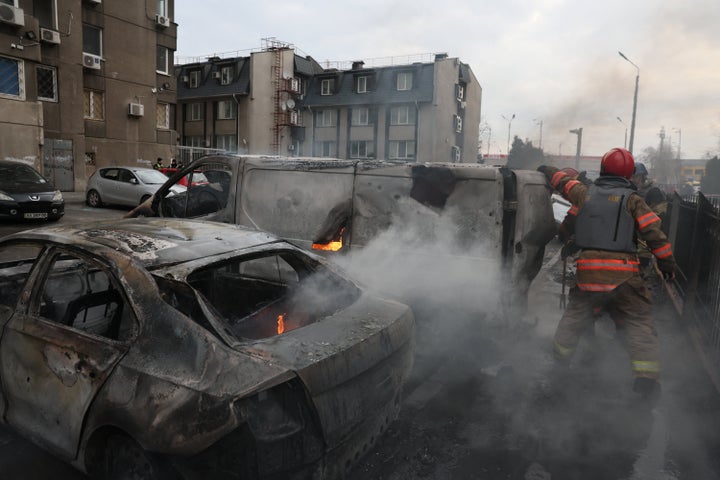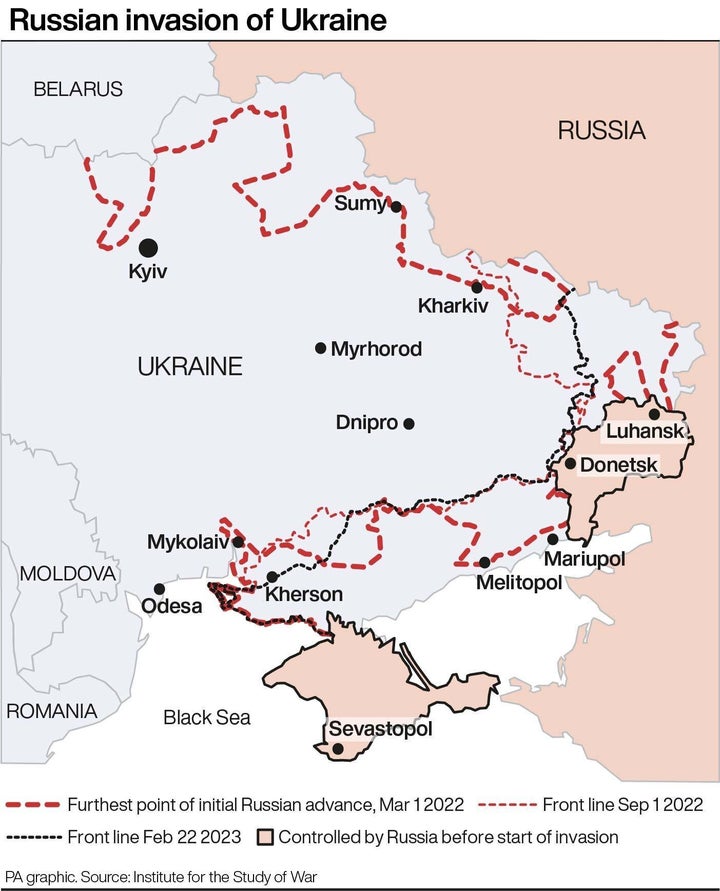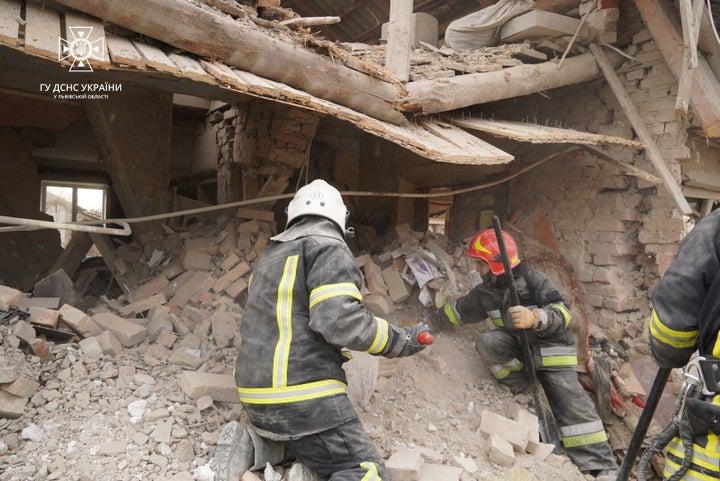
Russia just launched a fresh wave of brutal missile strikes across Ukraine overnight, cutting the energy supply across much of the country, killing civilians and reaching its largest nuclear power plant.
Ukraine has claimed that Moscow fired around 81 missiles on Wednesday night, making it the largest attack since the end of January when 11 people were killed by multiple strikes.
Zaporizhzhia, where the country’s largest nuclear power station is based, has also been affected – raising international fears about the potential for dangerous nuclear consequences.
Meanwhile, Russian forces continue to zero in on the eastern city of Bakhmut, which has turned into a gruelling battlefield in recent months and is completely without power, gas or water.
Following the largest attack since the so-called “special military operation” entered into its second year, here’s what you need to know.

Which parts of Ukraine were affected by the missiles?
The Kremlin decided to focus its attacks on Ukraine’s civil infrastructure five months ago when winter made progress on the frontline tougher.
Although the spring means weather conditions should be easing, Russia does not seem to have given up its air strikes. It targeted 10 regions in its brutal overnight attacks last night alone.
Ukraine said it shot down 34 cruise missiles, and four of the eight Iranian-made Shahed drones which were fired overnight. There were reportedly 81 missiles in total, many of which struck residential buildings all over the country.
Ukrainian officials say this included six kinzhal hypersonic missiles (Reuters described this an unprecedented number) which Kyiv cannot shoot down.
These missiles can allegedly travel faster than the speed of sound and at low altitudes, making them hard to track and even harder to stop. They can carry a nuclear warhead, too.
Air force spokesperson Yuriy Ihnat said the attack “was like never before”.

At least five were killed in a village house in the western region of Lviv according to local officials, and three in the southern city of Kherson.
Another died in the central Dnipro region and two more were injured after the missiles.
The capital Kyiv was targeted in its western and southern districts, meaning four in 10 people there are without power following a seven-hour air strike alert – the longest of the Russian air campaign so far.
The southern port city of Odesa was hit too, but no casualties were reported although the power was out. Fifteen missiles were also reported in Ukraine’s second largest city of Kharkiv, in the northeast.
Ukrainian president Volodymyr Zelenskyy said it was a “difficult night”, although energy systems are being restored.
In a statement, he said: “The occupiers can only terrorise civilians. That’s all they can do. But it won’t help them. They won’t avoid responsibility for everything they have done.”
Russia’s campaign is expected to reduce Ukraine’s ability to fight, while Kyiv has repeatedly accused Moscow of committing a war crime by targeting the civilians.
Russian officials also claimed that the disruption to the electricity to the power station was a “provocation” from Ukraine.
What’s happened in Zaporizhzhia?
The power grid supplying the nuclear plant of Zaporizhzhia was also struck in the missile attack by one of the hypersonic missiles.
That means for the sixth time since Russia seized the area in the early days of the war, the facility is not running on the Ukrainian power system but on backup diesel generators which only last 10 days.
It is Europe’s largest missile nuclear power plant and has been in Russian hands since the early days of the war – prompting widespread fears of a nuclear disaster if it is affected by the fighting.
After the attacks, Russia claimed that there “is no threat or danger of a nuclear incident” and there’s enough fuel to keep the plant running.
Still, the director general of the International Atomic Energy Agency, Rafael Grossi, said he was “astonished by the complacency” when it came to the strikes near the nuclear plant, and warned that “one day our luck will run out”.

Is the fight in Bakhmut ongoing?
The eastern city became the centre point for the Ukraine war over the winter, with Russian forces desperate to secure it so Moscow can consolidate its claims on the Donbas.
The West also suspects that the city has little value and that Russian generals are keen to give Putin his only victory for months.
Reports around what is actually happening there have been mixed.
Ukraine says it has pushed back Russian attacks on the city, but the mercenaries of the Kremlin-linked Wagner Group (who are leading the attack in Bakhmut) says its taken control of its eastern half.
Ukraine was also expected to withdraw, but now appears keen to remain and fight back.
The commander of Ukraine’s ground forces General Oleksandr Sirskiy said: “The importance of keeping Bakhmut is constantly growing.
“Each day of the defence of the town allows us to gain time to prepare reserves and prepare for future offensive operations. The enemy loses the most prepared and combat-capable part of his army.”
Around 20,000 and 30,000 Russian troops have been killed in Bakhmut since battle there began last summer, according to estimates from Western officials.
What can we expect next?
This kind of missile strike might be Russia’s main means of attack for the foreseeable future, according to the US director of National Intelligence.
Avril Haines, said that Russia might not be strong enough for new offensives – but president Vladimir Putin could prolong the war for years through these strikes.
She said: “We do not foresee the Russian military recovering enough this year to make major territorial gains, but Putin most likely calculates the time works in his favour, and that prolonging the war including with potential pauses in the fighting may be his best remaining pathway to eventually securing Russia’s strategic interests in Ukraine, even if it takes years.”
She suggested that Moscow might be looking just to consolidating its gains, but that it would need “mandatory mobilisation and third party ammunition sources” to sustain even its level of operations in Ukraine.
